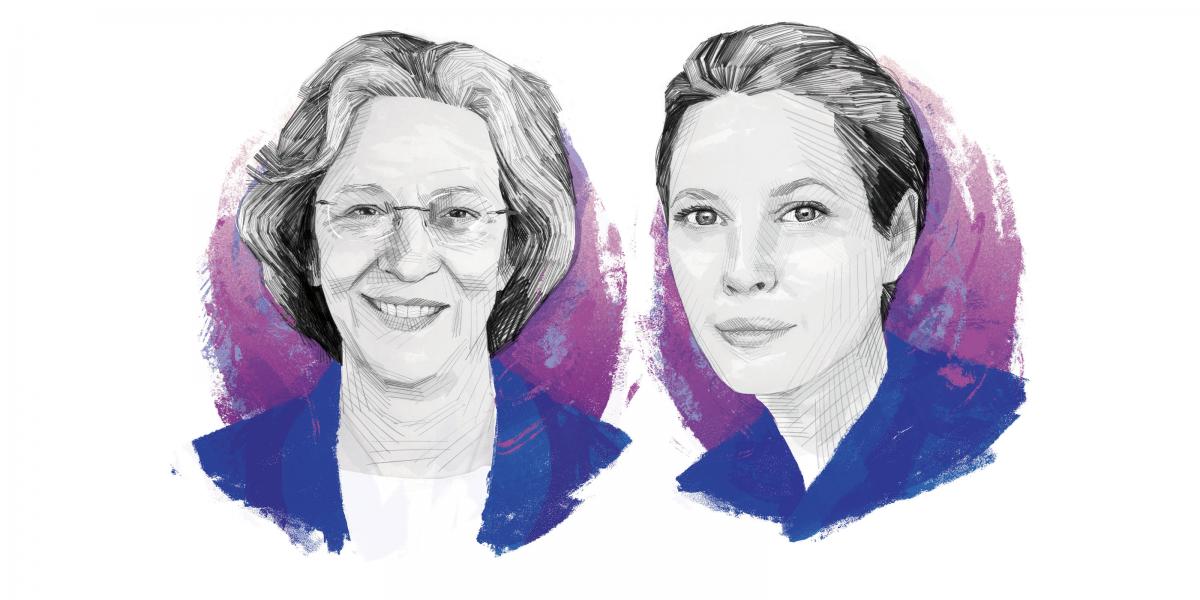The Exchange: Expecting Better
CCP's Susan Krenn and Christy Turlington Burns discuss challenges and opportunities in global maternal health.
Christy Turlington Burns remembers the exact date she became interested in maternal health. It was the day her daughter was born—and the day Turlington Burns suffered a postpartum complication that could have killed her. That experience led her to make No Woman, No Cry, a documentary film about pregnant women and their care providers in four countries; to pursue an MPH at Columbia’s Mailman School of Public Health; and to found Every Mother Counts, a nonprofit dedicated to achieving quality, respectful and equitable maternity care for all.
In this conversation, Susan Krenn, executive director of the Johns Hopkins Center for Communication Programs, draws on her more than 30 years with CCP to discuss with Turlington Burns the barriers and opportunities she sees in her work with pregnant women and mothers in the U.S. and around the world.
SK: At CCP, we use social and behavior change communication to inspire people to make healthy choices. We use a whole range of media to get the message out, including entertainment education, community approaches, TV and radio programs. We also work in advocacy. What advocacy approaches have you found work best for Every Mother Counts?
CTB: We started because of a film—storytelling has been part of our DNA from the very beginning. We’ve made over 22 films. The very first was a full-length film, and the others have been shorter-form, which I think is the best way information is absorbed these days. Shorter films are more shareable and allow for conversations to happen.
SK: One of the expressions we use here is “catering to the heart and mind.” The storytelling agenda you have done under Every Mother Counts really does that, because you’ve got the facts, but you’ve also got the personal stories.
A lot of [CCP’s] work is focused on ensuring people have the right information to act and to protect their own health. But we also find that education isn’t always enough. There are so many barriers that constrict what women in particular are able to do within their familial setting, and there are social constraints that actually stop them from going to the clinic and accessing care. Do you have any experience dealing with these particular issues?
CTB: There’s a story that comes to mind [from] No Woman, No Cry. It’s about a mother named Monica who was living in one of the slums in Dhaka. She was very advanced in her pregnancy when we first met her. We spent several weeks getting to know her and following her pregnancy. Ultimately, Monica needed to be referred to a hospital, so we followed her there.
Even with an advocate by her side, and even with a crew of filmmakers, the disrespect Monica encountered was just unbelievable. I’ve seen this countless times since. You might think that if the services are offered, and if they’re quality services, then a woman will go and take advantage of those services.
That’s not always the case, because even if a woman is offered free services or a ride to a facility, if she’s treated disrespectfully during her time there, that works against everything. When a woman in an underserved community has the opportunity to access health services, it is so critical that she is treated respectfully. That she is not discriminated against. That she’s not sequestered. That she’s not bullied. That she’s not traumatized when she leaves. Because what often happens is that she might never return to seek health services. She might also tell her entire community about her experience, and that can have a horrible ripple effect.
SK: I think one of the challenges for all of us working in this space is there is so much need, never enough resources, never enough time. So how do you, as an organization, prioritize where you invest your resources?
CTB: Investing in community-led or -based programs is really our sweet spot. We’ve tried to focus on models of care that have been proven. We love midwifery because in so many parts of the world, midwives are the provider type that can grow the fastest and have the strongest impact. We invest in the training and education of midwives in Guatemala, Haiti, Tanzania—and in the U.S. as well. In the U.S., we also focus on doula care, because community doulas are an invaluable resource for women of color in many of our underserved communities.
We have continuously rallied around these models of care and the community-based programs that are serving the most marginalized communities. This feels as important as anything we could do with the resources we have.
SK: It is a little bit alarming that a country like ours would have some of these same issues. What other needs do you think we should be focusing on here at home?
CTB: Most people don’t realize that there are different birth options with different providers, and with less invasiveness, which would make a huge difference [in maternal health outcomes]. Over half of all births in this country are covered by Medicaid, but for the most part, Medicaid doesn’t provide coverage for doula services, and Medicaid coverage of midwifery services is limited in some areas.
We also need to focus on the “fourth trimester,” or the postpartum period. Most maternal deaths happen after a woman gives birth. We are just starting to have consistent reporting on maternal deaths and having Maternal Mortality Review Committees in every state. The U.S. is really behind compared to other parts of the world, where audits of maternal deaths happen at the community level and everybody’s involved, and everybody is thinking about what happened and what could have been done differently. This still needs more focus in hospitals and institutions here.
